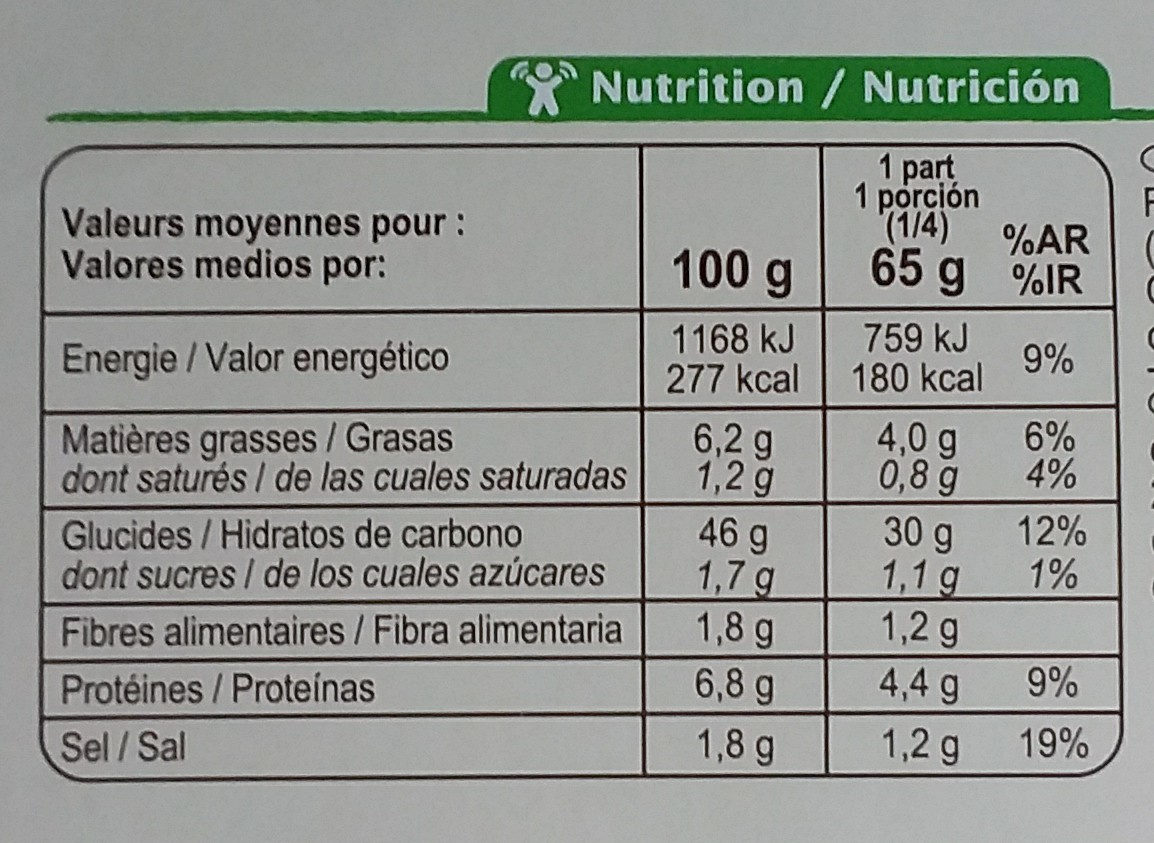Pâte à pizza - Carrefour - 260 g
This product page is not complete. You can help to complete it by editing it and adding more data from the photos we have, or by taking more photos using the app for Android or iPhone/iPad. Thank you!
×
Some of the data for this product has been provided directly by the manufacturer Carrefour.
Barcode: 3560070467945 (EAN / EAN-13)
Common name: Pâte à pizza prête à dérouler issue de l'agriculture biologique.
Quantity: 260 g
Packaging: Plastic, Cardboard, Tray, fr:Papier sulfurisé
Brands: Carrefour
Categories: Plant-based foods and beverages, Plant-based foods, Cereals and potatoes, Cereals and their products, Pie dough, Bakery products, Pizza dough
Labels, certifications, awards:
Organic, EU Organic, EU Agriculture, FR-BIO-01, Green Dot, Made in France, AB Agriculture Biologique


Origin of the product and/or its ingredients: Cette pâte à pizza est fabriquée en France à partir de blé cultivé dans l'Union Européenne.
Origin of ingredients: fr:Blé et tournesol cultivés en UE
Producer: Fabriqué en France par EMB 62510 pour Interdis.
Manufacturing or processing places: France
Traceability code: EMB 88516A - Vittel (Vosges, France), EMB 62510 - Liévin (Pas-de-Calais, France)
Link to the product page on the official site of the producer: https://www.carrefour.fr/p/pate-a-pizza-...
Stores: Carrefour
Matching with your preferences
Environment
Carbon footprint
Packaging
Transportation
Labels
Other information
Other information: 260g e Fabriqué en France
Preparation: Préchauffez votre four à 210°C (Thermostat 7) pendant environ 15 minutes.Sortez la pâte de son emballage et déroulez-la immédiatement avec sa feuille de cuisson sur la plaque ou la grille de votre four.Garnissez avec la sauce tomate et les ingrédients de votre choix.Mettez la plaque ou la grille dans le four à mi-hauteur.Selon votre recette, faites cuire environ 15 à 20 minutes à 210°C (Thermostat 7) en chaleur tournante (ajoutez 2 minutes de cuisson pour un four traditionnel).Le temps de cuisson est à adapter en fonction de la coloration dorée de la pâte. Nous vous recommandons de ne pas congeler ou faire cuire au four à micro-ondes.
Conservation conditions: À consommer jusqu'au : voir la date sur le film d'emballage. À conserver entre 0°C et +8°C. Conditionné sous atmosphère protectrice. Utilisez votre pâte dès l'ouverture, et consommez-la après cuisson.
Customer service: Interdis - TSA 91431 - 91343 MASSY Cedex - France
Report a problem
Data sources
Product added on by phoenix
Last edit of product page on by tasja.
Product page also edited by carrefour, ecoscore-impact-estimator, musarana, org-carrefour, packbot, psine, quechoisir, roboto-app, segundo, spotter, thaialagata, yuka.UmY1YUxiMENsTXNTc2NFN3h4alYwT3B1L3FPUVJUTHRKZFFmSVE9PQ.













